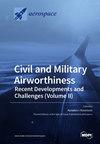Enhancing Flow Separation Control Using Hybrid Passive and Active Actuators in a Matrix Configuration
IF 2.1
3区 工程技术
Q2 ENGINEERING, AEROSPACE
引用次数: 0
Abstract
Efficient control of flow separation holds significant economic promise. This study investigates flow separation mitigation using an experimental platform featuring a combination of passive and active actuators arranged in a matrix configuration. The platform consists of 5 × 6 hybrid actuator units, each integrating a height-adjustable vortex generator and a micro-jet actuator. Inspired by the distributed pattern of V-shaped scales on shark skin, these actuator units are strategically deployed in a matrix configuration to reduce flow separation on a backward-facing ramp. Distributed pressure taps encircling the hybrid actuators monitor the flow state. Parametric analyses examine the effect of different control strategies. By adopting appropriate passive and active actuation patterns, effective pressure recovery on the ramp surface can be achieved. The most significant flow control outcome occurs when the actuators operate under combined active and passive excitation, harnessing the benefits of both control strategies. Particle image velocimetry (PIV) results confirm a notable reduction in flow separation under the best-controlled case. These findings suggest a promising future for flow control devices employing combined passive and active actuation in matrix-like configurations.利用矩阵配置中的混合被动和主动致动器加强分流控制
有效控制流动分离具有重大的经济前景。本研究使用一个实验平台,以矩阵配置的被动和主动致动器组合为特色,对流动分离缓解进行了研究。该平台由 5 × 6 个混合致动器单元组成,每个单元都集成了一个高度可调的涡流发生器和一个微型喷射致动器。受鲨鱼皮肤上 V 形鳞片分布模式的启发,这些致动器单元被战略性地部署在矩阵配置中,以减少后向坡道上的流动分离。环绕混合致动器的分布式压力抽头可监测流动状态。参数分析检验了不同控制策略的效果。通过采用适当的被动和主动致动模式,可以在坡道表面实现有效的压力恢复。当执行器在主动和被动激励下联合运行时,流量控制效果最为显著,同时利用了两种控制策略的优点。粒子图像测速(PIV)结果证实,在最佳控制情况下,流动分离明显减少。这些研究结果表明,在类矩阵配置中采用被动和主动联合激励的流量控制装置前景广阔。
本文章由计算机程序翻译,如有差异,请以英文原文为准。
求助全文
约1分钟内获得全文
求助全文
来源期刊

Aerospace
ENGINEERING, AEROSPACE-
CiteScore
3.40
自引率
23.10%
发文量
661
审稿时长
6 weeks
期刊介绍:
Aerospace is a multidisciplinary science inviting submissions on, but not limited to, the following subject areas: aerodynamics computational fluid dynamics fluid-structure interaction flight mechanics plasmas research instrumentation test facilities environment material science structural analysis thermophysics and heat transfer thermal-structure interaction aeroacoustics optics electromagnetism and radar propulsion power generation and conversion fuels and propellants combustion multidisciplinary design optimization software engineering data analysis signal and image processing artificial intelligence aerospace vehicles'' operation, control and maintenance risk and reliability human factors human-automation interaction airline operations and management air traffic management airport design meteorology space exploration multi-physics interaction.
 求助内容:
求助内容: 应助结果提醒方式:
应助结果提醒方式:


